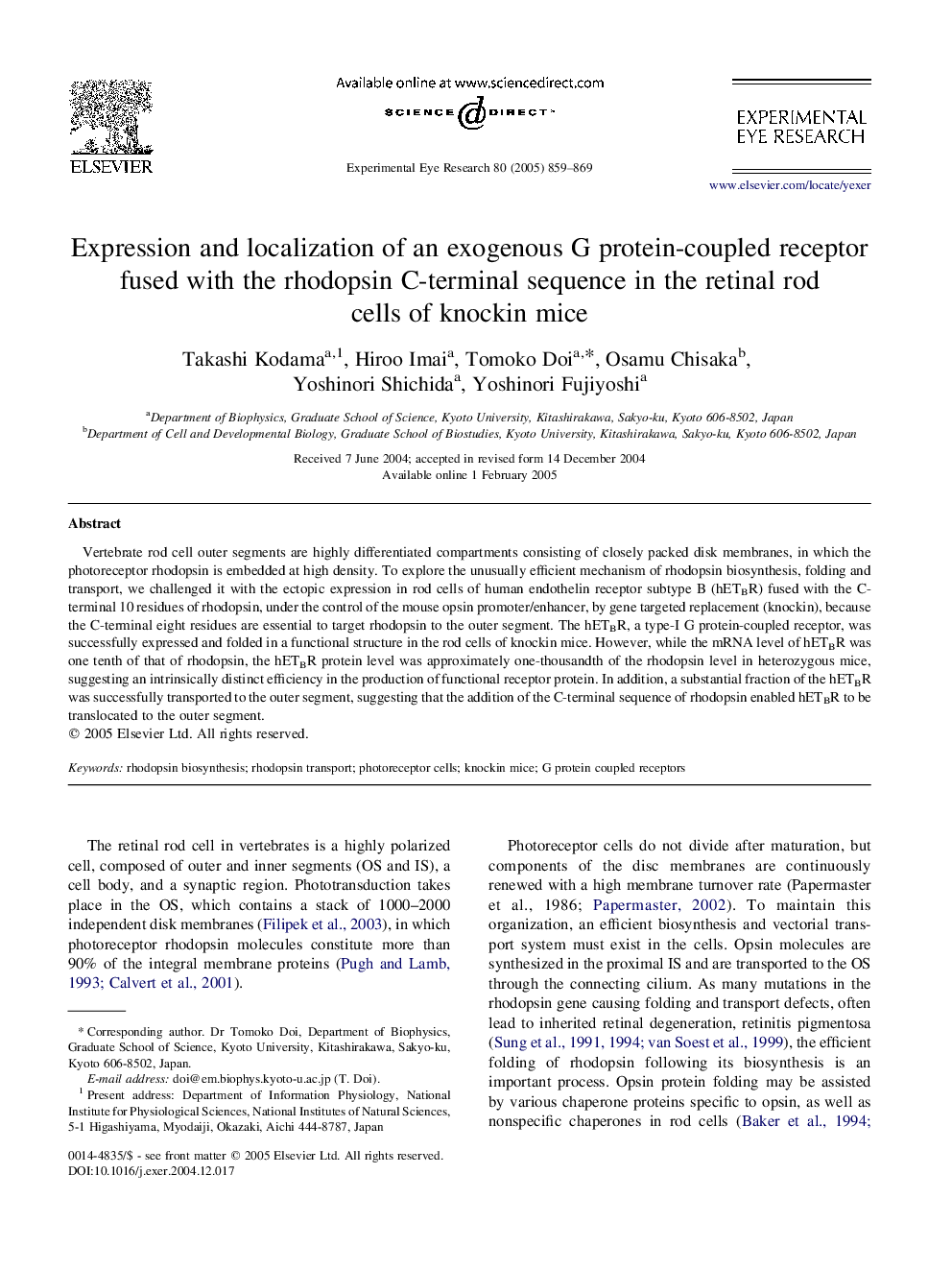| Article ID | Journal | Published Year | Pages | File Type |
|---|---|---|---|---|
| 9341487 | Experimental Eye Research | 2005 | 11 Pages |
Abstract
Vertebrate rod cell outer segments are highly differentiated compartments consisting of closely packed disk membranes, in which the photoreceptor rhodopsin is embedded at high density. To explore the unusually efficient mechanism of rhodopsin biosynthesis, folding and transport, we challenged it with the ectopic expression in rod cells of human endothelin receptor subtype B (hETBR) fused with the C-terminal 10 residues of rhodopsin, under the control of the mouse opsin promoter/enhancer, by gene targeted replacement (knockin), because the C-terminal eight residues are essential to target rhodopsin to the outer segment. The hETBR, a type-I G protein-coupled receptor, was successfully expressed and folded in a functional structure in the rod cells of knockin mice. However, while the mRNA level of hETBR was one tenth of that of rhodopsin, the hETBR protein level was approximately one-thousandth of the rhodopsin level in heterozygous mice, suggesting an intrinsically distinct efficiency in the production of functional receptor protein. In addition, a substantial fraction of the hETBR was successfully transported to the outer segment, suggesting that the addition of the C-terminal sequence of rhodopsin enabled hETBR to be translocated to the outer segment.
Related Topics
Life Sciences
Immunology and Microbiology
Immunology and Microbiology (General)
Authors
Takashi Kodama, Hiroo Imai, Tomoko Doi, Osamu Chisaka, Yoshinori Shichida, Yoshinori Fujiyoshi,
